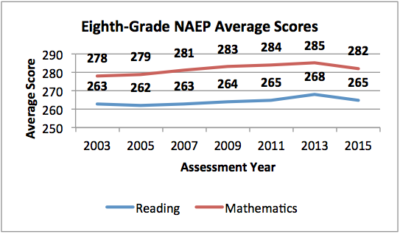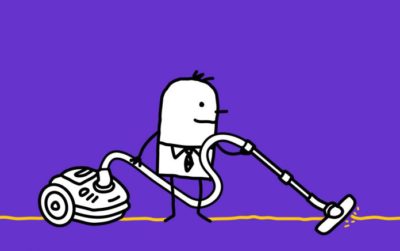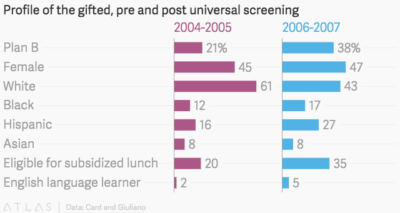“The world as we have created it is a process of our thinking.
It cannot be changed without changing our thinking.”
― Albert Einstein
My world of teaching has been in a four-grade classroom for a number of years now – all subjects, all students, 5th-8th grades. This has lead to a process of thinking and teaching that includes all sorts of skills for differentiating instruction and juggling the inevitable pulling ahead and tugging back of student abilities.
 But, last year I became painfully aware of that my “usual” operations were not working for this particular grouping of students. I could tell their needs were not being fully met and frankly, I was getting burned out trying to span the range of abilities. I needed a change in my thinking surrounding teaching and learning. I began to explore other approaches to teaching and took what I found to my students. I knew that this level of massive change would be akin to fixing a plane while flying it. I needed everyone on board, to be…on board!
But, last year I became painfully aware of that my “usual” operations were not working for this particular grouping of students. I could tell their needs were not being fully met and frankly, I was getting burned out trying to span the range of abilities. I needed a change in my thinking surrounding teaching and learning. I began to explore other approaches to teaching and took what I found to my students. I knew that this level of massive change would be akin to fixing a plane while flying it. I needed everyone on board, to be…on board!
We decided on an approach rooted in personalized learning and with the added feature of flexible seating. Gulp! Big changes!
What I have found most fascinating throughout this experience has been the way in which we have collectively experienced these changes. When I first told my students about flexible seating and how they would get to design the classroom, they were ecstatic! Big sheets of paper, markers and ideas were strewn about as the students set out to “design” our space. Unsurprisingly, every group featured beanbags. Yet, surprisingly, two of the groups had neatly arranged their beanbags into rows of five by four. Changing thinking is tricky…
The 2019-21Operating Budget request has been released by Superintendent Reykdal. In this budget, there is a $37 million increase in spending for professional development to occur over the next two years. This request seeks to allow for more comprehensive, on-going and content-relative opportunities to develop professionally. This emphasis on sustainable change is reflective of the latest research in what makes for effective professional development. Inherent in this quality of professional development is the process of change on behalf of educators.
The concept of moving from “sage on the stage” to “guide on the side” is not new in the field of education. I had honestly thought I had mastered the guiding/coaching side of teaching. A personalized learning approach seemed a natural fit for my students and me. What I have come to discover is that this first six weeks of school has been a steep learning curve, backed with a lot of online professional development as I have reflected on the philosophy of personalized learning and how I am implementing it in my classroom. It turns out the “stage” is awful hard to step away from. Changing thinking is hard…
Education is in a transformative state across the nation and across our state as we work together to prepare our students for the futures before them. We must change our thinking to meet their changing futures. This level of transformative change in the classroom and in our teaching requires time, effort and resources. The operating budget set forth by Superintendent Reykdal allows for the time to implement such changes. The vast majority of educators I know are willing to put in the effort for change – that is if it is “real” and worthy. Now, it will be interesting to see how the availability of resources unfolds to meet the challenge of changing our thinking.
 In fact, this backwards system of integration may explain why reading scores have flatlined since 1998!
In fact, this backwards system of integration may explain why reading scores have flatlined since 1998!
 “Mommy made me mash my M&M’s,” trills from the nervous troupe of twenty-five on the stage. Kindergarten to high school, these children are all warming up their voices for this summer’s presentation of “Alice in Wonderland” to be presented at our community theater. It is an all-children production; children will be acting, building sets, running lights and generally spending their summer months of June and July busily learning the art of theater. Wow! It is a whirlwind of creativity and intense focus!
“Mommy made me mash my M&M’s,” trills from the nervous troupe of twenty-five on the stage. Kindergarten to high school, these children are all warming up their voices for this summer’s presentation of “Alice in Wonderland” to be presented at our community theater. It is an all-children production; children will be acting, building sets, running lights and generally spending their summer months of June and July busily learning the art of theater. Wow! It is a whirlwind of creativity and intense focus! Universal screening eliminates the reliance on nominations/referrals (which eliminates any potential of bias or problems of access skewing the identification process).
Universal screening eliminates the reliance on nominations/referrals (which eliminates any potential of bias or problems of access skewing the identification process).

 After our new Education Secretary, Betsy DeVos, stepped into a public school last week, perhaps for the first time, she told a journalist that the teachers seemed to be “waiting to be told what they have to do.”
After our new Education Secretary, Betsy DeVos, stepped into a public school last week, perhaps for the first time, she told a journalist that the teachers seemed to be “waiting to be told what they have to do.” I’m getting a new student tomorrow. I haven’t met him yet, but I’ve met his discipline record, and it’s staggering. He’s packed more misbehavior into his short life than most of us commit in a lifetime. Not only that, but academically he’s at least three years below the rest of my class.
I’m getting a new student tomorrow. I haven’t met him yet, but I’ve met his discipline record, and it’s staggering. He’s packed more misbehavior into his short life than most of us commit in a lifetime. Not only that, but academically he’s at least three years below the rest of my class. It always starts with a dream. A real dream; not an aspiration or goal, but the kind you have when you sleep. One year it was a poorly-executed field trip to Manhattan (with fourth graders) and another year I had a class of forty but no classroom. I was expected to teach them out on the lawn.
It always starts with a dream. A real dream; not an aspiration or goal, but the kind you have when you sleep. One year it was a poorly-executed field trip to Manhattan (with fourth graders) and another year I had a class of forty but no classroom. I was expected to teach them out on the lawn. Wednesday was the last day of my thirty-second year teaching. Besides a flurry of part-time teenage jobs, I’ve never really done anything else and I honestly can’t imagine a different career.
Wednesday was the last day of my thirty-second year teaching. Besides a flurry of part-time teenage jobs, I’ve never really done anything else and I honestly can’t imagine a different career.